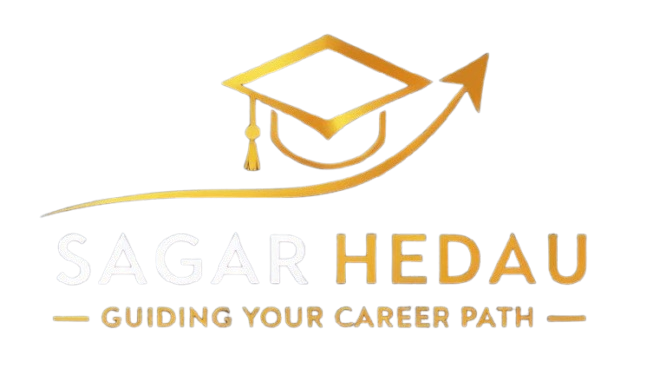First impressions are crucial in professional settings, often shaping how others perceive and interact with you. A well-crafted introduction can open doors to new opportunities, foster meaningful connections, and set the tone for successful professional relationships. Whether you’re at a networking event, job interview, or business meeting, knowing how to introduce yourself effectively is a valuable skill.
This blog post will explore seven key tips on “How to introduce yourself professionally?” to help you make a lasting and positive impression when introducing yourself professionally. By mastering these techniques, you’ll be better equipped to navigate various professional scenarios with confidence and leave a memorable impact on your audience.
Some key pointers to know when introducing yourself:
- The Elevator Pitch A concise, 30-second summary of who you are, what you do, and what value you bring. This should be tailored to the specific situation and audience.
- Current Role and Responsibilities Be prepared to clearly articulate your current position, key responsibilities, and recent achievements. This gives immediate context to your professional status.
- Relevant Skills and Expertise Highlight 2-3 key skills or areas of expertise that are most relevant to the situation or potential role you’re discussing. Focus on what sets you apart from others.
- Career Objectives Have a clear, concise statement about your career goals or what you’re looking for in your next opportunity. This shows direction and ambition.
- Industry Knowledge Demonstrate awareness of current trends, challenges, or developments in your industry. This shows you’re engaged and up-to-date in your field.
- Notable Achievements Be ready to share 1-2 significant professional accomplishments that showcase your capabilities. Use specific, quantifiable results when possible.
- Conversation Hooks Prepare a few topics or questions related to the company, role, or industry that can spark further discussion. This shows your interest and engagement.
How to introduce yourself professionally? 7 Super Tips
Tip 1: Start with a confident greeting
Begin your introduction with a warm, confident greeting that sets a positive tone. Make eye contact, offer a firm handshake (when appropriate), and smile genuinely. Your initial greeting should be tailored to the formality of the situation.
For instance, “Hello” or “Good morning/afternoon” works well in most professional settings, while “Hi” might be suitable for more casual environments. Speak clearly and at a moderate pace to ensure your greeting is heard and understood.
Remember that your greeting is the first point of contact, so aim to convey enthusiasm and approachability. A strong start will help you establish rapport and make the other person more receptive to your introduction.
Tip 2: State your full name clearly
After your greeting, state your full name clearly and concisely. Enunciate each syllable to ensure it’s easily understood, especially if you have an uncommon name. If your name is difficult to pronounce, consider offering a phonetic pronunciation or a nickname.
For example, “My name is Siobhan O’Connor, pronounced ‘Shi-vawn’.” In some cultures, it’s customary to state your family name first, so be aware of cultural norms when introducing yourself internationally.
If you’re in a formal setting or there’s a chance of confusion, you might want to repeat your name at the end of your introduction. This repetition helps cement your name in the listener’s memory.
Tip 3: Provide relevant context
After stating your name, provide context that’s relevant to the situation. This could include your job title, company, or the reason you’re at the event. For example, “I’m the Marketing Manager at XYZ Corporation” or “I’m a freelance graphic designer specializing in brand identity.”
In networking events, you might mention your industry or area of expertise. For job interviews, briefly state your current role and why you’re interested in the position. The key is to offer information that’s pertinent to your audience and the setting. This context helps the other person understand your background quickly and can serve as a springboard for further conversation.
Tip 4: Highlight your unique value proposition
After providing context, briefly highlight what makes you unique or valuable in your field. This could be a key accomplishment, a special skill, or a perspective you bring to your work. For instance, “I’ve helped small businesses increase their online presence by 200% in the past year” or “I combine my background in psychology with data analysis to create more effective marketing strategies.”
Keep this statement concise and relevant to your audience. Your unique value proposition should pique interest and differentiate you from others. It’s an opportunity to showcase your strengths and leave a memorable impression. Remember to strike a balance between confidence and humility when presenting your achievements.
Tip 5: Use appropriate body language
Non-verbal communication plays a crucial role in how you’re perceived.
- Maintain good posture to project confidence – stand or sit up straight with your shoulders back.
- Make consistent eye contact to show engagement, but don’t stare intensely as this can make others uncomfortable.
- Use open body language by avoiding crossed arms or turning away from the person you’re speaking to.
- Smile naturally to appear approachable and friendly. If appropriate, offer a firm handshake.
- Be mindful of personal space, and respect cultural differences in proximity norms.
Your body language should complement your words, reinforcing the positive, professional image you’re aiming to project.
Tip 6: Tailor your introduction to the situation
Adapt your introduction based on the context and audience. A brief, punchy introduction might work best at a fast-paced networking event, while a more detailed one could be appropriate for a job interview.
Consider the industry norms – a creative field might welcome a more casual approach, while traditional industries might expect more formality. If you’re speaking to potential clients, focus on how your skills can benefit them. When meeting peers, emphasize common interests or experiences.
For senior executives, highlight your strategic thinking or leadership qualities. By tailoring your introduction, you demonstrate social awareness and increase the likelihood of making a relevant, impactful connection.
Tip 7: End with a conversation starter or call-to-action
Conclude your introduction with a statement that invites further interaction. This could be a question related to the event or the other person’s work, or a call-to-action that suggests the next steps. For example, “I’d love to hear about your experience in the tech industry” or “Let’s exchange contact information to discuss potential collaboration opportunities.”
In a job interview, you might say, “I’m excited to learn more about the challenges your team is facing and how I can contribute.” This approach shows your interest in meaningful engagement and helps transition smoothly into a conversation. It also leaves the interaction open-ended, increasing the chances of a memorable and productive exchange.
Interview Scenario Related To “How to introduce yourself professionally”
A strong introduction in a job interview can significantly impact your chances of success. It sets the stage for the entire conversation and helps position you as a top candidate. Here’s how to make your introduction effective:
- Preparation is key: Practice your introduction to boost confidence and fluency.
- Strike a balance: Showcase your professional value while letting your personality shine through.
- Start with a warm greeting: Thank the interviewer for the opportunity.
- Be concise and direct: When answering “Tell me about yourself,” demonstrate your ability to communicate efficiently.
- Project confidence: Deliver your introduction with enthusiasm and clarity.
- Maintain eye contact: This non-verbal cue conveys confidence and comfort.
- Tailor your introduction: Highlight skills and experiences most relevant to the role.
- End with a hook: Conclude with a statement that invites further discussion about your qualifications.
- Be authentic: Let your genuine interest in the role and company come through.
- Listen actively: Be prepared to engage in a dialogue, not just deliver a monologue.
Remember, your introduction is your first opportunity to demonstrate why you’re the ideal candidate for the position.
Questions related to “How to introduce yourself professionally?”
Q: Why is it important to introduce yourself properly?
Proper introductions create a positive first impression, establish credibility, and set the tone for future interactions. They help others understand who you are and what you bring to the table.
Q: What are the benefits of introducing yourself?
Benefits include building new connections, opening doors to opportunities, establishing your professional identity, and creating a foundation for meaningful relationships. It also helps you control the narrative about yourself.
Q: What is the power of introducing yourself?
The power lies in shaping perceptions, differentiating yourself from others, and creating memorable connections. A strong introduction can influence how others view and interact with you throughout your relationship.
Q: Why is making introductions important?
Introductions facilitate networking, foster collaboration, and create a more inclusive environment. They help break the ice in social and professional settings, making further interaction easier and more comfortable.
Q: What is the importance of a proper introduction?
Proper introductions demonstrate professionalism, respect for social norms, and social intelligence. They help avoid awkwardness and misunderstanding while maximizing the potential for positive engagement.
Q: What is the important thing in introducing yourself?
The most important aspects are clarity, relevance, and authenticity. Your introduction should clearly communicate who you are and what you do, be tailored to the situation and audience, and genuinely reflect your personality and values.
Conclusion
Mastering the art of professional introductions is a valuable skill that can significantly impact your career trajectory. By implementing these seven tips – starting with a confident greeting, clearly stating your name, providing relevant context, highlighting your unique value, using appropriate body language, tailoring your approach, and ending with a conversation starter – you’ll be well-equipped to make lasting impressions in various professional settings.
Remember, the key to a great introduction lies in preparation, practice, and authenticity. Refine your introduction over time, adapting it to different situations and audiences. With consistent effort, you’ll develop a natural, confident approach to introducing yourself professionally, opening doors to new opportunities and connections.


